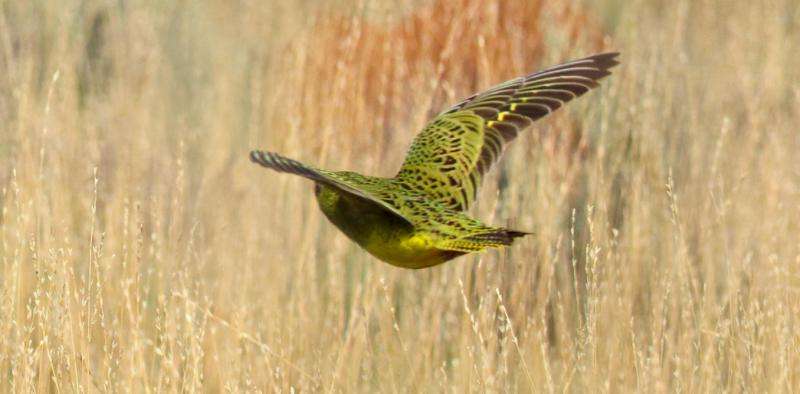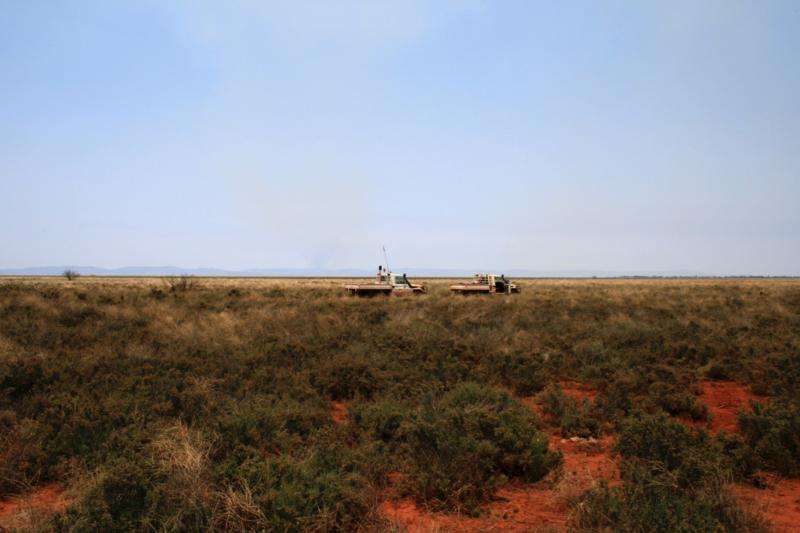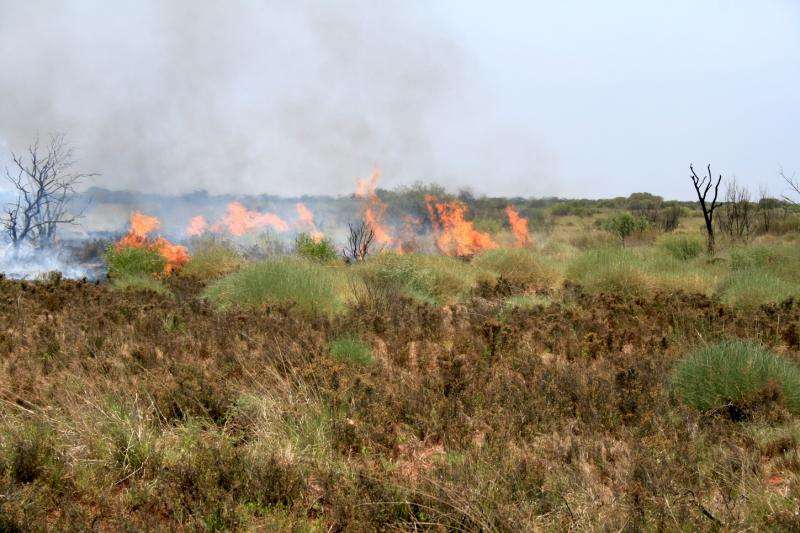Night parrot rediscovery in WA raises questions for mining

The Night Parrot is unquestionably one of Australia's most enigmatic, elusive and enthralling species. The final frontier of Australian ornithology, this cryptic parrot eluded dedicated expeditions to find it for nearly half a century.
Last week, a momentous chapter in the Night Parrot story was written, with the first photograph of a live Night Parrot in Western Australia. The photos come in the wake of several other recent sightings, including the parrot's rediscovery in Queensland in 2013.
Despite media reports, the parrot has never been officially listed as extinct, with sporadic evidence of its existence throughout the 20th century.
But now we know for sure that the parrots are alive and found across the continent, we can move on to making sure they remain so in the future.
Mystery bird
We know that Night Parrots favour spinifex or tussock grasslands, often close to inland wetland systems. But the areas of potential habitat are vast throughout inland Australia.
The Night Parrot has been listed as endangered in the Action Plan for Australian Birds since 1992. It is listed as endangered under federal legislation.
It has never been listed as "presumed extinct" or "extinct". Reliable ongoing reports and the well-known cryptic nature of the species meant that the ornithological community considered it likely to have survived, albeit incredibly hard to spot.

The Night Parrot has been known to exist in WA since at least 2005, when a colleague and I clinched the first peer-accepted sighting in recent Australian history during an environmental impact assessment for the Fortescue Metals Group (FMG) Cloudbreak mine.
This was by no means the first sighting of Night Parrots in WA, with regular and reliable reports since at least the 1980s. But until 2005 none had provided sufficient detail to eliminate other possibilities. Further sightings have been monitored at another location in the arid zone since 2009 and that work is pending publication.
The significance of the latest find is immense. A dedicated team of birdwatchers (Adrian Boyle, Bruce Greatwich, Nigel Jackett and George Swann) has confirmed the existence of a population in WA. The discovery, resulting from a well-planned expedition, is the start of a real dialogue about Night Parrot conservation in WA.
The latest record cements the fact that Night Parrots are present at several locations in WA and potentially throughout arid Australia, including in regions rich in mineral resources.
In contrast to the Queensland populations, which have so far been found in national parks and pastoral leases, the WA situation sets up a quandary for how to manage development, Night Parrots and mining.
Mining and conservation
Our 2005 sighting was important because, given the parrot's endangered status, FMG was required to provide offsets for potential disturbance to Night Parrot habitat. The offsets included avoiding areas of likely habitat on the Fortescue Marshes, and funding follow-up surveys throughout the areas surrounding the proposed mine. These unfortunately did not find further evidence of Night Parrots.
Research offsets from FMG also funded the writing of a national research plan for Night Parrots. This was later followed by on-ground research on Night Parrots at Pullen Pullen Reserve in Queensland, the population found by naturalist John Young in 2013.

Recent developments by other WA resource companies have seldom considered Night Parrots. My personal experience is that surveys usually look for endangered mammals such as Northern Quolls and Bilbies, but rarely search properly for Night Parrots. This is likely due to two main reasons.
The first is the incredibly cryptic nature of the Night Parrot. Clearly the species has evaded detection for so long because it is difficult to find.
The second is what I term "the Thylacine factor". The only equivalent species in Australia that has the same degree of scepticism and mythology is the Thylacine.
Thylacines have (so far) not been rediscovered. But developers, consultants and regulators take the same attitude to Night Parrot sightings. The parrots are often seen as a mythical animal that doesn't exist. The idea of looking for them is met with mirth.
Finding the parrots
Recent findings from research by Steve Murphy in Queensland, and other recent work in WA, are slowly providing us with the tools to overcome both of these issues. With better knowledge of their specific habitat requirements, including a need for long-unburned grasslands close to water sources, we can reduce the daunting challenge of Night Parrots potentially existing anywhere that spinifex is found.
The recent release of calls from the Queensland population and a new recording of calls from the WA population provide the most powerful tool yet for doing surveys. Playing back the calls can be used to elicit a response from any Night Parrots in the area. The call can also be used to identify calls from deployed remote recording devices.
As more populations are discovered and more evidence becomes available, this will help convince the public and decision-makers that the parrots are (hopefully) found across a wide range and need careful management, despite the difficulty of observing them.
Let's hope government bodies will strongly enforce the requirement to search for Night Parrots in all areas of potential habitat within their known current and historic range. This should ensure that we don't lose any parrots before they are even found.
Provided by The Conversation
This article was originally published on The Conversation. Read the original article.![]()





















